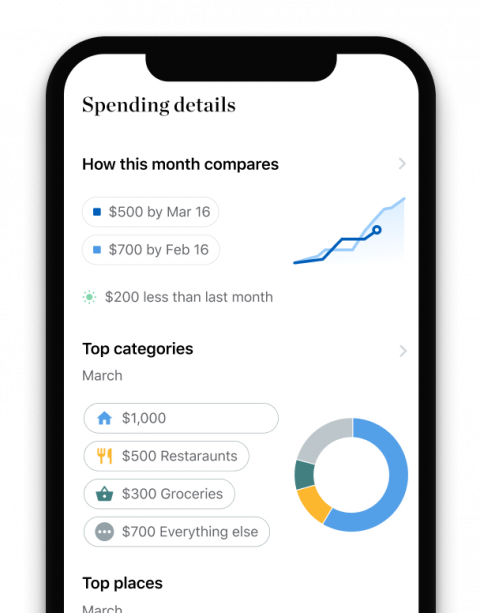Sweet v. Cardona Update: Relief Delayed For Some Defrauded Student Loan Borrowers

Many or all of the products featured here are from our partners who compensate us. This influences which products we write about and where and how the product appears on a page. However, this does not influence our evaluations. Our opinions are our own. Here is a list of our partners and here's how we make money.
Sweet v. Cardona update: On Feb. 16, the Justice Department acknowledged that roughly 60,000 borrowers are still waiting for relief scheduled for Jan. 28. Relief is also ongoing for other groups of borrowers.
In late January, relief was slated to roll out for about 200,000 federal student loan borrowers who were defrauded by their colleges. It’s the result of a final $6 billion-plus settlement in Sweet v. Cardona, a class action lawsuit filed by borrowers who argued they’d been defrauded by about 150 mostly for-profit colleges. A second group of borrowers is slated to receive relief this summer.
However, roughly 60,000 Sweet v. Cardona borrowers are still waiting for relief that was due on Jan. 28, according to a February statement from the U.S. Department of Justice.
The Sweet v. Cardona settlement has been nearly five years in the making. A federal judge cleared the last major remaining legal roadblock in February 2023, affirming a prior ruling from November 2022.
One last major legal hurdle remains. On Dec. 5, 2023, the Ninth U.S. Circuit Court of Appeals heard oral arguments from three schools involved in the case — American National University, Everglades College, Inc. and Lincoln Educational Services, Inc. — who appealed the approved settlement and asked for relief to stop. Until the court makes a decision, the Department of Education will delay discharging any loans associated with these schools.
If you think you may qualify for Sweet v. Cardona relief, here’s what you need to know.

What is Sweet v. Cardona?
Sweet v. Cardona is a class action lawsuit first brought by borrowers who had been waiting years for the Education Department to process or approve their borrower defense applications. The original name of the complaint, filed in June 2019, was Sweet v. DeVos, after former Secretary of Education Betsy DeVos.
In their initial complaint, plaintiffs alleged that the Education Department “intentionally adopted a policy of inaction and obfuscation” for borrower defense applications since at least 2017.
Borrower defense offers loan discharge to borrowers whose schools — mostly for-profit — misrepresented such outcomes as graduation and employment rates, assistance like financial aid or even school classroom resources. The program launched in 2015, but discharges slowed to a near-complete halt during the Trump administration due to rules changes and inaction.
Who gets Sweet v. Cardona relief — and when
The settlement applies to nearly 300,000 borrowers who had a pending borrower defense application as of June 22, 2022. This cohort, also called the “class,” is split into two categories: the automatic relief group and the decision group. A separate group of about 200,000 borrowers, called the “post-class” group, can also get Sweet v. Cardona relief.
Automatic relief group
This group consists of people who borrowed to attend one of the 151 schools listed in the lawsuit — about 200,000 borrowers, or 75% of the class. If you’re in this group, you’ll get “full” and “automatic” relief, including:
Any outstanding student loans listed on your borrower defense application will be discharged.
A cash refund for any payments you previously made on your federal student loans.
History of these loans will be removed from your credit report.
You should receive your full settlement relief on or before Jan. 28, 2024.
However, about 60,000 borrowers in this group are still waiting on overdue relief. Here's the delivery breakdown for borrowers in the automatic relief group, as of Feb. 16:
135,526, or 69%, of borrowers have received fully processed loan discharges.
31,437, or 16%, of borrowers have not received fully processed loan discharges. (Of this group, 3,581 borrowers have fully processed discharges for only some, but not all, eligible loans.)
28,964, or 15%, of borrowers "require further investigation" to confirm whether they have received fully discharges.
Note: class members who took out loans to attend American National University, Everglades College, Inc. and Lincoln Educational Services, Inc. are not yet eligible for relief, as a legal appeal from these three schools is currently under consideration.
Decision group
This group consists of people who had a pending borrower defense application as of June 22, 2022, but who did not attend one of the 151 schools listed in the lawsuit — about 64,000 borrowers, or 25% of the class. They’ll receive a decision from the Education Department on a staggered basis, depending on when they submitted a borrower defense application.
Here’s the latest notification timeline, according to the Department of Education:
Application submitted | Decision notification deadline |
|---|---|
Between Jan. 1, 2015, and Dec. 31, 2017. | No later than July 28, 2023. |
Between Jan. 1, 2018, and Dec. 31, 2018. | No later than Jan. 28, 2024. |
Between Jan. 1, 2019, and Dec. 31, 2019. | No later than July 28, 2024. |
Between Jan. 1, 2020, and Dec. 31, 2020. | No later than Jan. 28, 2025. |
Between Jan. 1, 2021, and June 22, 2022. | No later than July 28, 2025. |
If your application is approved, you should receive your relief within one year of notification. You are entitled to the same full settlement as the borrowers in the automatic relief group.
Borrowers in this class group whose decision notifications arrive after the deadline (or not at all) are also entitled to full, automatic relief.
Post-class group
About 206,000 borrowers applied for borrower defense between June 22, 2022 and Nov. 16, 2022 — the time between settlement execution but before the final court approval. This group is not technically part of the “class” of borrowers in the lawsuit, but they can still get relief.
These borrowers should have received a notice confirming their post-class applicant status by May 28, 2023.
The Department of Education must send these so-called “post-class applicants” an individual decision within three years, or by Jan. 28, 2026 at the latest. If the Department misses this deadline, those borrowers will get full, automatic relief.
There’s not yet a confirmed timeline for when approved post-class applicants can expect to receive relief.
Do I have to make student loan payments?
If you are part of the Sweet v. Cardona class — either the automatic relief group or the decision group — the Education Department will pause your federal student loans that are eligible for borrower defense. This payment pause, called “administrative forbearance,” means that you don’t have to make student loan payments while you wait for application processing or loan discharge, even if your servicer sends you a bill in error. The Education Department will reimburse any interest that accrues during your forbearance, even if they eventually deny your borrower defense application.
The forbearance should be automatic for direct loans. If you have commercially held FFELP student loans, you may have to contact your servicer and explain that you’re eligible for administrative forbearance due to a pending borrower defense decision or settlement.
If only some of your student loans are included in your borrower defense application, you’ll still need to continue making payments on the other student loans that don’t qualify for borrower defense. Administrative forbearance won’t apply to any private student loans, either.
Borrowers who applied for borrower defense after Nov 22, 2022 (including the post-class group) can still ask their servicer to place them in forbearance while they await a decision or settlement. However, interest will still accrue for these borrowers. As an alternative to forbearance, consider a new income-driven repayment plan called SAVE. If your income is low enough, you can qualify for $0 monthly payments — and interest won’t build up month-to-month.
What if my application was denied?
You’re not out of luck if your borrower defense application submitted prior to Nov. 16, 2022 was denied.
If your borrower defense application was initially denied between December 2019 and October 2020, the Education Department is rescinding that denial and you will be treated as a member of the Sweet v. Cardona class.
If you’re eligible for the Sweet v. Cardona relief, but your application doesn’t meet approval standards, the Department will send you a “revise and resubmit” notice explaining why your application was denied. You have six months from the day you get this notice to resubmit. If your application is denied a second time, you may challenge the decision in federal court. Borrowers awaiting an overdue decision about their borrower defense application can fill out the class notice survey, which is operated by The Project on Predatory Student Lending (PPSL), one of two nonprofit legal organizations representing affected borrowers in the lawsuit.
How to get help if your relief is overdue
The Education Department was legally obligated to disperse settlements to borrowers in the automatic relief group by Jan. 28, 2024. However, relief is missing or overdue for about 60,000 borrowers in this group.
Double-check your email inboxes to see if you missed notification sent from [email protected]. According to the PPSL, relief emails may have one of the following subject lines:
Approval of Your Borrower Defense Case Under Exhibit C of the Sweet v. Cardona Settlement.
Sweet v. Cardona Settlement: Borrower Defense Notice to Revise and Resubmit.
Sweet v. Cardona Settlement: Borrower Defense Notice of Approval.
Sweet v. Cardona Settlement Post-Class Applicant Borrower Defense Notice.
If you’re awaiting an overdue settlement, contact The Project on Predatory Student Lending and fill out their Class Notice survey. You can also contact the Federal Student Aid office’s ombudsman.
For more information, the PPSL offers a helpful Sweet v. Cardona FAQ section on their website. The Federal Student Aid office also has more information.
What if I don’t qualify?
If you believe you’ve been defrauded by your school, but you didn’t apply for borrower defense by Nov, 15, 2022, you’re not eligible for the Sweet v. Cardona settlement.
However, you can still apply for borrower defense relief on StudentAid.gov.


